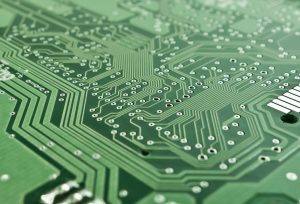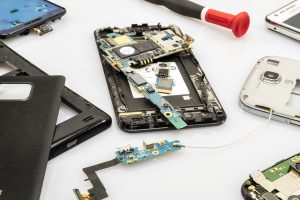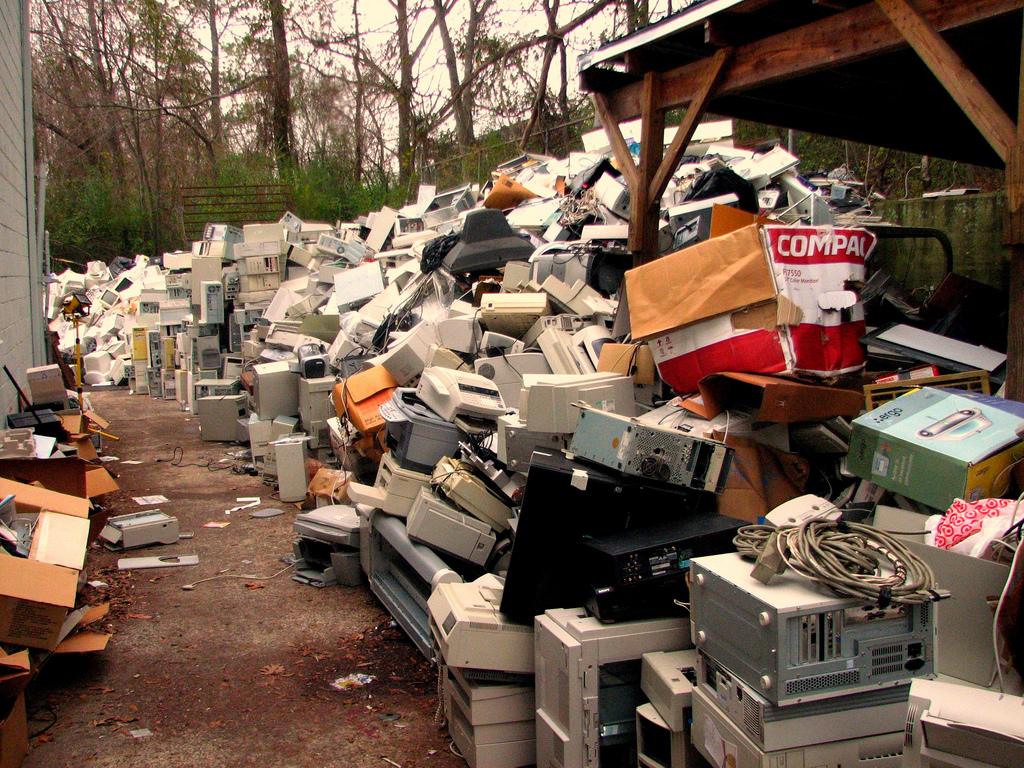There are seen and unseen barriers to e-waste recycling. Here are the top barriers to e-waste recycling and how using this knowledge can help e-waste recycling, also known as techwaste recycling, grow this year.
It’s always encouraging when recycling rates increase. It’s refreshing when we learn some countries are doing exceptionally well at recycling their waste. For example, Germany has the best recycling rate in the world followed by Austria, South Korea, and Wales. All four countries recycle between 52% and 56% of their municipal waste, which should serve as an inspiration to other nations.
You’d be surprised to learn that the US does not have as good of a rate when it comes to recycling waste. In 2013, American’s produced roughly 254 million tons of waste and recycled about 34.3 percent of this waste. How can we help increase this rate? By preventing common barriers to recycling, particularly, techwaste recycling.
As manufacturers keep churning out new, more sophisticated versions of our favorite electronics, consumers across the globe rush to buy them – and then dispose of the older models. The amount of e-waste we generate as trash is skyrocketing, but now we need to increase the amount of e-waste we recycle.
So why are techwaste recycling rates stagnant? One reason is that as is the case with recycling in general, there are barriers to getting people to participate. Until we recognize and acknowledge those barriers, they’re likely to continue impeding the push to efficiently elevate techwaste recycling rates.
What Are the Top Barriers to E-Waste Recycling?

What keeps people from taking their used electronics to an experienced recycling firm like Great Lakes Electronics Corporation, which can successfully recycle the individual parts and make them available to manufacturers for new products?
We know that some people simply throw out their used smartphones or laptops, often because they’re not aware that they can be recycled, or why it’s important to do so – or they simply hoard it, tossing it into a desk drawer, then forget about it.
Either way, we lose the ability to recycle the valuable parts that are still within those devices, parts which can then be available to manufacturers.
And we clearly want to avoid e-waste being thrown out, since electronics contain toxic materials like mercury and lead that can contaminate our soil and water.
Experts in this field have cited a variety of reasons why recycling rates remain low, including the lack of techwaste recycling facilities and drop off points in some cities and states; privacy concerns about accessing old data on those devices; and just plain hoarding.
But one thing we do know from studies is that the problem isn’t because people don’t want to recycle or reject the concept.
In a 2018 survey by The Recycling Partnership, a national nonprofit working to promote recycling in towns, cities and states, said that 62 percent of respondents said it was a “turn-off” if someone doesn’t recycle.
But we also know there can be a gap in recycling knowledge from one household and business to the next, including knowing which household or business items can be recycled, and where they can be taken. The Recycling Partnership has estimated that every household has the power to keep 800 pounds of standard recyclables out of the landfill every year, so clearly, there’s some work to be done on educating the public.
New research from the Waste & Resources Action Programme (WRAP), an organization that works with businesses, individuals and communities to achieve a circular economy by reducing waste, has identified four central barriers that frequently stop people from recycling or limit how often they do. They include:
- Physical barriers: including limited access to recycling bin containers, unreliable collection service or living in places far from recycling sites.
- Behavioral issues: like people assuming they’re too busy to recycle or simply forget about it.
- Lack of knowledge or understanding: about what can get recycled;
- Attitudes or perceptions: such as thinking recycling is a waste of time.
Those are issues that can stop people from recycling in general, but there are also specific issues related to e-waste. Although we know that in recent years, more Americans have turned to electronic waste recycling, our numbers could be even better.
One common barrier to efficient e-recycling is that big-name electronic manufacturers have been building devices that are difficult if not impossible to take apart and repair, so the owner will instead buy the new version. As a result, broken or malfunctioning electronics are no longer repaired but instead pushed to the side and treated as “junk” to be thrown out with the trash – even though broken devices still have parts within them that can be successfully recycled.
As a result, we have an estimated 20 to 50 million metric tons of electronic waste being disposed of globally every year. And it’s why a number of states are now pushing “Right to Repair” legislation to require manufacturers to make repair options available for broken devices.
There’s also the concern, raised by both the United Nations and environmental groups, that there’s a significant lack of awareness about electronics recycling, and what the environmental and economic benefits are. In the United States, there are no federal laws governing techwaste recycling, and only about half the states have laws addressing the issue.
In fact, the United Nations has called for governments at the federal, state, and even local level to work together with equipment manufacturers and electronics recycling companies to raise awareness about the importance of taking e-waste to an experienced recycler.
What Solutions Can Break Down Those Barriers?

The United Nations is hoping that governments step up to the plate and address the situation, but the real key is for consumers to act. There’s a lot that the government can do to educate people about why recycling used electronics is important, but we all have a role to play in creating a committed pro-recycling culture.
Today, there’s an organization, The Solving the E-waste Problem (StEP) Initiative, working to create that extended culture and to promote sustainable solutions. They’re supporting globally consistent re-use practices, principles and standards for e-waste, and educating people about the way recycling and re-use are the keys to helping us deal with the issue of how the shortened lifespan of these products have skyrocketed the amount of e-waste that is produced.
They’re promoting the benefits of recycling and reuse, including a fast-growing techwaste recycling industry that’s creating jobs and contributing millions in local tax revenue; the fact that using recycled material to make new electronics is far less costly for manufacturers than obtaining virgin metals; and those parts can also be a critical source of IT equipment for businesses and educational establishments in the developing world.
Electronic waste presents a major challenge both in the U.S. and globally because of its large quantities, short product life, and decreasing product size due to rapid technological innovation. But the message we need to reinforce is that e-waste isn’t disposable “junk” at all, but products that still contain valuable materials such as gold and copper, which can generate revenue from recycling e-waste and recovering materials. State of the art recycling technology today makes it possible for those materials to be recovered – and successfully reused.
It’s been estimated that by the year 2025 in China, nine tons of gold, 15 tons of silver and 3,100 tons of copper will be out of the supply loop because of billions of unrecycled phones are not available for future manufacturing. Now is the time to start working to turn that around.
E-waste Recycling Solutions
How to deal with the rising amount of e-waste has become a global concern, and even the United Nations has warned about the ecological disaster that awaits if we don’t increase recycling rates. By recognizing the top barriers to e-waste recycling and finding the solution.
We also know that all electronics contain plenty of valuable metals, which is one of many reasons why we should be recycling electronic devices. We also know that as more and more of the world becomes high-tech, our environmental problem with e-waste will keep piling up and that a dramatically rising number of old phones, laptops, and other electronic devices will end up in landfills, polluting our environment.
That’s why we all support the work being done by environmentalists, government agencies and health care advocates to raise awareness about the risks to the Earth’s resources from this growing amount of e-waste.
Recycling remains the most effective way to keep e-waste from damaging our environment and our health, which is a message we all need to keep repeating.
That’s why it’s important for everyone to take their unwanted electronics to a proven recycling firm like Great Lakes Electronics Corporation.
Great Lakes Electronics Corporation has a great reputation for being trusted experts in the recycling and management of waste electronics and other metals. The unwanted equipment brought to their experienced team is recycled in a responsible, environmentally conscious way, by this family-owned and operated business that prides itself as being environmental stewards.
Great Lakes Electronics Corporation serves customers both large and small, from private customers to large corporations. Contact them today at 888-392-7831 to request a quote.

